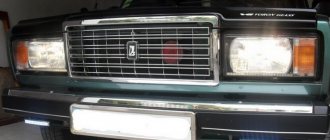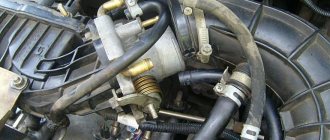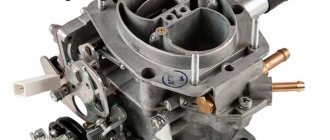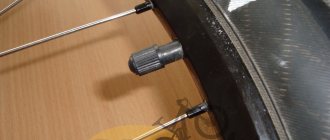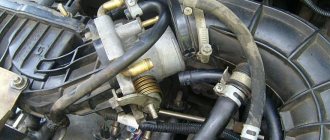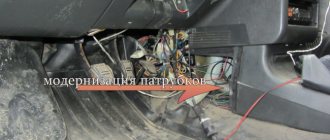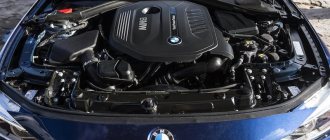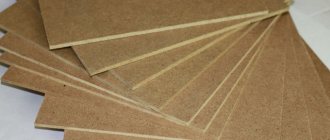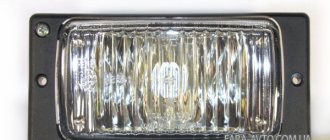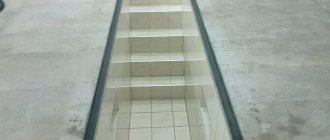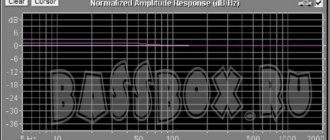A properly organized ventilation system of a paint booth is extremely important to ensure the health safety of people working in it. Also, the painting technology depends on proper air exchange and humidity levels.
The problem is the cost of installing a ventilation system for a paint booth - the cost can be several hundred thousand rubles if we are talking about a workshop with a large flow of clients. For “domestic” purposes (for example, a paint booth in a garage), the cost of the organization will be lower.
Functions of the ventilation system
Paint emits volatile organic compounds, which pose a fire hazard and cause health problems for paint shop operators and the environment. Productive and safe work in the booth is impossible without a ventilation system for the paint booth. Its functions:
- Ensures the safety and proper working conditions of the painter due to intensive ventilation inside the cabin.
- Prevents dusting of painted surfaces.
- Thanks to the filter system, it prevents the entry of harmful substances into the surrounding atmosphere.
- Accelerates the drying process of varnished elements by increasing the air flow, which promotes the evaporation of solvents.
Figure 1. Automotive paint booth ventilation
Failure to comply with the proper air exchange rate (0.25 -0.30 m/s) exposes the worker to inhalation of toxic fumes of varnish or paint.
Conclusion
The main problem for a paint booth is the accumulation of a large amount of fumes that are toxic to the human body and the appearance of paint fog. The quality of the work performed depends on compliance with the technological process, i.e. maintaining a certain microclimate and temperature at different cycles. High-quality ventilation will help solve all problems.
A properly organized ventilation system of a paint booth is extremely important to ensure the health safety of people working in it. Also, the painting technology depends on proper air exchange and humidity levels.
The problem is the cost of installing a ventilation system for a paint booth - the cost can be several hundred thousand rubles if we are talking about a workshop with a large flow of clients. For “domestic” purposes (for example, a paint booth in a garage), the cost of the organization will be lower.
Primary requirements
There are two phases of operation in the spray booth:
- Coloring phase
- Drying phase.
Both modes require a fan to operate correctly. Thanks to it, vapors from varnish or paints do not affect the health of the person doing the work. The spray booth fan can be single-flow, mounted on the engine axis, or double-flow, driven by a belt drive. Centrifugal fans are always used. The first type is cheaper and tolerates heavy contamination of ceiling filters relatively well. Double-flow fans are much more efficient and, due to the larger number of blades, are not subject to air pulsation.
Exhaust fans greatly improve air flow. This ensures faster drying of varnishes, less dust, the ability to equalize pressure in the cabin and the ability to paint more elements at the same time. They are made of aluminum construction and filled with galvanized panels. Air efficiency is regulated by a damper equipped with the device.
Features of air ventilation in painting booths
If we are planning to build a paint shop or modernize an existing one, choosing the right device is essential to avoid unnecessary energy losses in the future and ensure optimal working conditions for painters. The main problem that painters face is the unevenness of air flow speed in the horizontal section of the cabin. This problem concerns not only paint booths, but also ventilation systems of all kinds of rooms.
The speed and direction of the air flow must be the same throughout the entire working area of the cabin. In practice, achieving this result is very difficult. This is the main difficulty in designing ventilation in a painting booth. The most dangerous phenomena are backflow - this can cause paint mist to rise up rather than be removed.
Design difficulties
The main task when developing a ventilation project is to achieve optimal microclimate parameters, minimize the harmful effects of paint fumes on the operator, and organize uninterrupted air exchange. Precise design of the paint booth ventilation system ensures that technological requirements are met and that there is no threat to the health of employees. It will also be interesting:
- service station ventilation;
- car wash ventilation.
Recommendations for selection
When choosing the right paint, it is important to pay attention to the speed of color change. Cleaning, or rather the process itself, is also important. Therefore, the number of filters is directly related to shades
Therefore, the number of filters is directly related to shades.
The cameras are equipped with various equipment for operation. For example, a manual or automatic spray system. The machines are fixed both motionless and on a manipulator. For the latter, it is possible to choose several degrees of freedom.
It turns out that it is better to choose according to the following characteristics:
- Shape and size of processed parts (products for powder coating).
- Performance calculations.
- Color change rates and their total number.
- Energy carrier.
This is the only way to achieve benefits by controlling costs and quality of coatings. Yes, and one more thing: the price of a finished powder paint chamber directly depends on the configuration and workload during production.
There are companies that assemble such spray booths according to individual requirements or preferences.
Any design has specific areas for the painting process, as well as differences in size and price. If we consider the dimensions, then it is not the dimensions that are important, but the working volumes of the chambers. Therefore, for specific needs, you can select the required volume in advance. That is, when choosing, they must focus on working and production issues, on the parts that will be processed.
Types of ventilation systems: comparative analysis and functions
There are 3 types of ventilation for car paint booths:
- inlet;
- exhaust;
- supply and exhaust.
Let's talk about each of them in more detail.
Forced ventilation
Supply ventilation for the painting chamber provides the supply of outside air and dilutes the polluted air to the maximum permissible concentration. How does the equipment work?
- The supply ventilation unit draws in air from outside. At this stage it is filtered and enters the heater.
- A heater (water, gas or oil) heats the air to the desired temperature.
- Upon entering the salon, the air is re-filtered to remove all air pollutants for the highest quality paint job.
- Due to the appropriate temperature, air flow and air purity, the paint adheres well to the painted elements.
- Polluted air leaving the cabin is cleaned through 2 stages of filtration and released outside.
It is possible to use a heat exchanger (recuperator), thanks to which the warm air leaving the cabin heats the incoming cold air without mixing the flows.
Exhaust ventilation
Exhaust ventilation for a paint booth is an essential element of a modern paint booth. System components:
- Electric motor of sufficient power.
- Automatically controlled diaphragm to regulate excess pressure in the cabin.
- Centrifugal fan.
- Synthetic filter assembly.
- A set of activated carbon filters or a second layer of synthetic filters.
- A metal element connecting the device to the cabin.
The electric fan is installed at the bottom of the box. When painting and varnishing, the device must operate in maximum mode.
Supply and exhaust ventilation
Supply and exhaust ventilation dilutes and displaces exhaust air with street air, which is forced into the chamber by mechanical supply electric fans or natural air flows through doors, windows or other openings in the building. Can be used as a complement to local hood.
System location
When choosing an equipment configuration, you can use a ready-made solution and buy a spray booth with pre-installed ventilation. You can adapt another room for these needs. In this case, you will have to equip it yourself. It is important to organize the inflow through the ceiling. The air should move along the long walls of the box. The exhaust opening is equipped at the bottom: exhaust air is discharged through ventilation trenches.
Figure 2. Location of the ventilation system in the spray booth
Interior decoration and arrangement
When choosing materials for finishing a paint booth, many people prefer lining. This option is attractive from a price point of view, but it is not recommended for fire safety reasons.
Experts recommend choosing metal and non-combustible elements (for example, corrugated sheets). This coating is easy to finish and is reliably protected from fire.
When arranging the inside of the spray booth, it is important to consider the following nuances:
If you have a small room, you can use cement-sand plaster
Before treatment, it is important to moisten the walls using a sprayer. This approach ensures better binding of dust with water, which ensures a clean surface.
The use of OSB board and metal leads to rapid accumulation of dust. A vacuum cleaner is used to remove it.
The use of plastic panels leads to increased accumulation of dust (10 times more than in the case of wood or metal trim).
The finish of the spray booth should be airtight, with minimal risk of dust or other contaminants. There should be no foreign elements in the box that act as “dust collectors”. We are talking about sofas, carpets, fabric products or furniture.
Ceiling right angles are made in the form of bevels - this will reduce air turbulence.
When choosing a paint booth color, white powder paint is preferred. Its use provides better color rendition and simplifies the process of painting a car.
For convenience, it is worth providing a room (utility room) for people and storage of necessary equipment.
Ventilation operating modes in painting booths
Painting takes place in four modes, including spraying, blowing, drying and cooling. These conditions are taken into account when designing and developing a ventilation scheme in the paint booth. The device must have a power reserve to organize air exchange in all modes. Temperature range reserve: +55 – 100°C. It is in this mode that the painted car is dried.
Features of the ventilation system for painting boxes
The ventilation in the paint booth must be finely adjusted to adapt to different painting conditions. The optimal solution is stacked ventilation systems with separate supply and exhaust ventilation. When installing an installation of any configuration, it is necessary to organize the vertical movement of fresh air through the ceiling and removal of contaminated air through the floor covering.
Operating modes
The calculation and arrangement of ventilation must be carried out taking into account the operating mode of the spray booth. The main ones are painting, including spraying and blowing, and drying. Each mode requires strictly defined microclimate parameters.
Filtration
The ventilation of the paint booth for cars is equipped with a three-stage cleaning system. The following filters are used:
- rough cleaning;
- additional cleaning;
- fine cleaning;
- filters under the floor grille catch varnish fragments;
- Ceiling filters - ensure the absence of dust.
All filtration systems must be equipped with inspection hatches for regular and hassle-free replacement.
Humidity
Humidity control is one of the main tasks of the ventilation system. Achieved by installing additional elements. Duct humidifiers enrich the air with microparticles of water. A duct dehumidifier works on the principle of condensing moisture in the air and then removing it.
Ventilation diagram for a car paint booth
Clean, pre-filtered air enters the chamber through ceiling openings. The waste is discharged through ventilation trenches under the floor covering. Contaminated air masses undergo a multi-stage cleaning procedure before being released into the environment.
Figure 3. Spray booth ventilation diagram
Conditions in the spray booth
Microclimatic parameters should be in the range of +20 – 24°C (temperature), 50-70% (humidity). Exhaust equipment is installed at floor level. Supply air is supplied from above and from behind the operator.
Air exchange rate rate
When determining the rate of air exchange of the paint booth ventilation system, the following parameters are taken into account:
- Air supply - the number of cubic meters of air blown into the cabin per hour. In a chamber adapted for water-based varnishes, with internal dimensions of about 7 m * 4 * 2.8 m (L x W x H), it should be about 24,000 m³/h.
- Air movement speed is not less than 0.22 - 0.25 m/s.
- Filtration - If there are residential buildings in the immediate vicinity of the service, it should be possible to install carbon cartridges with the highest filtration capacity as final filters.
Requirements for ventilation of paint booths are set out in SNiP 41-01-2003 and SP 60.13330.2016.
Filtration system
To avoid any troubles associated with the release of unpleasant odors, the paint shop, or rather its emission system, must be equipped with an activated carbon filter. It will help clean the air from solvent vapors, heavy metals, organic compounds, dioxins, and solid pollutants. It is important that the filter matches the parameters of the spray booth - performance and fan pressure. Otherwise, problems may arise in the form of clogging of the paint cap, which creates a real safety hazard in the workshop. Moreover, an incorrectly selected filter can degrade the quality of the coatings being painted.
Below are the most popular types of filters for paint shops:
- Cardboard filter - optimal for installation in places where paints and varnishes are used. It can be used for pre-filtration and also as part of a wider system. It has a simple structure and is easy to replace. Highly efficient and environmentally friendly.
- Multi-layer filter - universal for the paint shop. Easily replaced, durable, and has a long service life. High efficiency and environmental friendliness are the main qualities.
- Pocket filter - used for pre-cleaning in manufacturing plants, offices, paint shops and workshops. In addition, it is used in heating, air conditioning and ventilation systems. It has very good dust absorption and a long service life.
- Cartridge filter - its effectiveness is due to its large filtration area and high throughput. Small but very effective.
Filters should be selected in accordance with the type of installation responsible for air purification.
Calculation
The most important part of creating ventilation is making calculations. A well-designed scheme will not leave dead zones and will ensure a sufficient flow of fresh air. It is important to calculate two parameters: the area of the holes and air exchange - the volume of air pumped into the room per hour.
Air exchange is calculated using the formula:
P = Width*Length*Height* (temperature inside - temperature outside)*0.36, where dimensions are the size of the spray booth, and 0.36 is the correction factor.
When calculating temperature differences, adjustments are made for seasonality. It is believed that the temperature inside should be maintained at +22 °C. And outside they determine the maximum and minimum and count the 2 differences. Then the average is taken.
Example! There is a box 4X6X2.8 meters, the outside temperature is +10 ° C. Then the air exchange: P = 4 * 6 * 2.8 * (22-10) * 0.36 = 290.304 cubic meters per hour. This means that in an hour in a room with a volume of 67 cubic meters, the air should completely change approximately 4 times. During drying, this parameter increases.
The dimensions of the ventilation duct are calculated from the ratio: there should be 1.5 centimeters of opening per 1 square meter. If the ceiling area is 6x4 meters - 24 square meters, then the ventilation area is 0.36 meters. During installation, you can divide one hole into several smaller holes, for example, into a pair - 0.18 meters each. If the room is actively used, then be sure to install a fan.
Design
The main task of design is to develop an optimal solution for a specific problem. The project specifies the installation method and diameter of ventilation ducts, calculation of air balance, location of the recuperator, air intake, exhaust, supply and exhaust elements, and parameters of the supply and exhaust unit. A list of materials for installation is compiled.
Figure 4. Designing ventilation in a paint booth
Installation
When installing ventilation in the painting booth, the object is prepared. Ventilation ducts and longitudinal trenches are laid in the floor. Nodal units and sound insulation are installed. At the final stage, a leak test is carried out and commissioning work is carried out.
Figure 5. Installation of ventilation in the painting booth
Prices for installing ventilation in a painting booth
| Service | Price |
| Installation of rigid air ducts | 1,600 rub./m2 |
| Installation of flexible air ducts | 350 RUR/m2 |
| Installing filters | From 1,000 rub. |
| Installation of a fan for round ducts d100-125 | 2,500 rub. |
| Installation of a fan for round ducts d160-200 | 3,500 rub. |
| Installation of a fan for round ducts d250-315 | 5,000 rub. |
| Installation of a fan for rectangular ducts 400x200 mm | 3,500 rub. |
| Installation of a fan for rectangular ducts 500x250 mm | 4,000 rub. |
| Installation of a fan for rectangular ducts 500x300 mm | 4,500 rub. |
| Installation of a fan for rectangular ducts 600x300 mm | 6,000 rub. |
| Installation of a fan for rectangular ducts 600x350 mm | 7,000 rub. |
| Installation of a fan for rectangular ducts 700x400 mm | 8,000 rub. |
| Installation of a fan for rectangular ducts 800x500 mm | 10,000 rub. |
| Installation of noise suppressors | From 500 rub. |
| Air heater installation | From 2,500 rub. |
| Air cooler installation | From 2,500 rub. |
| Installation of air intake grilles | From 450 rub. |
| Installation of flow-through exhaust valves (diffusers) | From 300 rub. |
Our certificates
The engineering company Kvent has a number of certificates, licenses and approvals that allow us to carry out the necessary design, installation, dismantling, as well as connection and maintenance work.
|
|
All licenses and certificates are presented on a separate page of our website.
Some more useful information
In order to complete the interior decoration, use non-flammable materials - for example, metal. You should not choose an option such as lining, as the risk of fire increases. Depending on how correctly the finishing work is carried out, it will be possible to assess the degree of tightness, which is important to avoid the ingress of dust and foreign particles. Give preference to smooth, easy-to-clean surfaces - this will simplify the cleaning process.
The work of painting a car is simplified by the presence of automatic process control. This, of course, will affect the cost of the entire project, but, on the other hand, you will receive a number of invaluable advantages. The automatic control panel must have a panel made of durable, reliable material. It should be easy to use, ergonomic and comfortable. Consider the ability to quickly switch between manual and automatic modes.
FAQ
How many times should the air in the spray booth be changed?
The number of replacement cycles depends on the operating mode of the box and is in the range of 50-150 units.
What kind of fan is needed for a spray booth?
Radial electric fans are a good solution for the ventilation system of a paint booth. They are characterized by high efficiency and optimal performance.
What kind of air exchange should there be in the spray booth?
The requirements determine the microclimate temperature to be 25-30°C and the air exchange rate to be 50-150.
Security measures
The safety of the ventilation system is ensured by the correct choice of equipment, materials and installation locations. When the spray gun operates, a fog is formed, saturated with particles of flammable and explosive substances. To prevent the cloud of paint and varnish materials from igniting, the hood in the painting garage is equipped with heaters with closed heating elements.
The room must be equipped with a fire alarm, installing sensors that respond to smoke and increased temperature. Engines should be equipped with timers, programmers and thermostats. These devices will turn off the devices when they detect signs of an emergency. It is necessary to place a powder fire extinguisher in the room to extinguish fire in case of fire of electrical appliances and a carbon dioxide fire extinguisher to eliminate the ignition of cars, clothes and containers with paints and varnishes.
